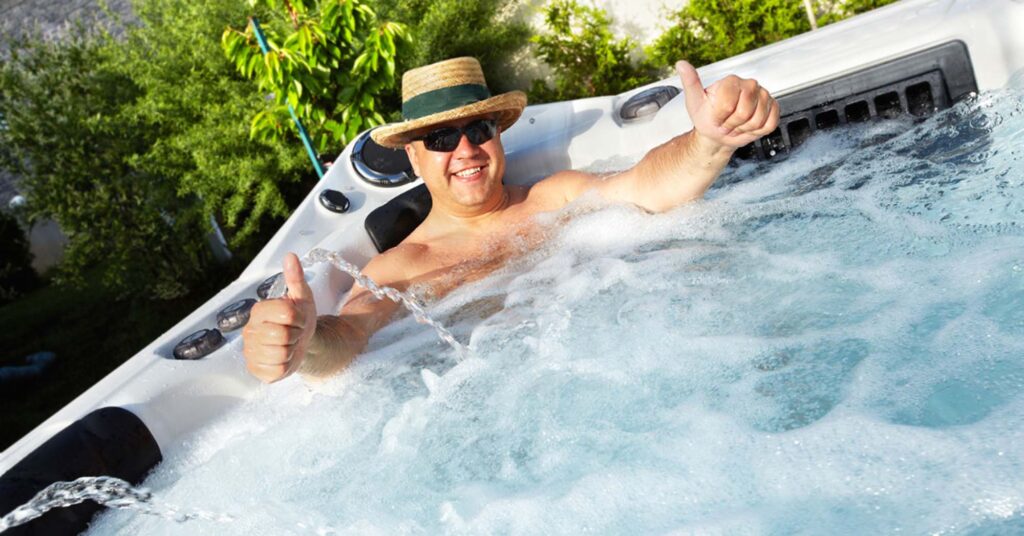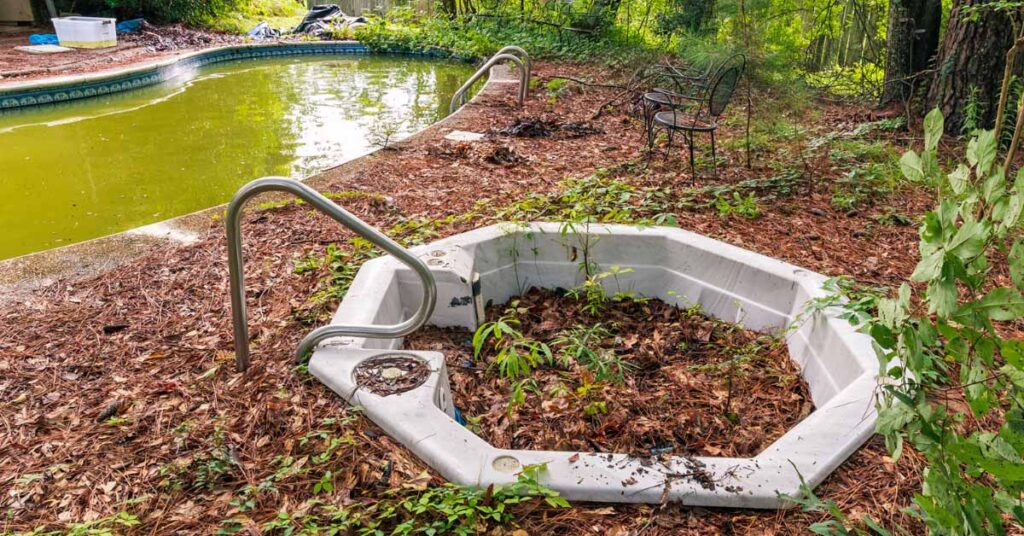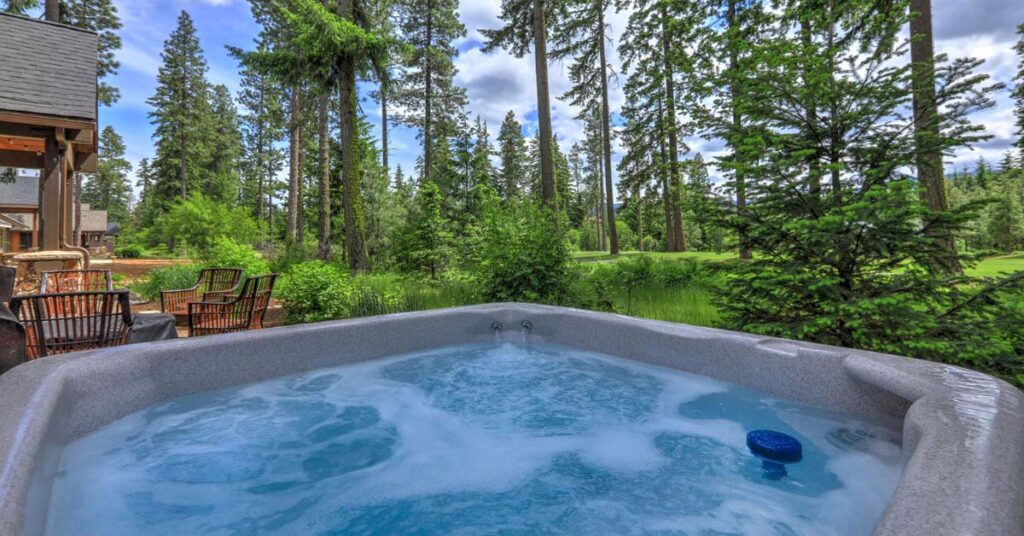Myth #1: You Don’t Need to Shower Before Entering a Hot Tub
It’s a common belief that skipping a shower before hopping into a hot tub is no big deal. However, this couldn’t be further from the truth. Showering before entering a hot tub is crucial because it removes oils, dirt, sweat, lotions, and bacteria from your skin. These contaminants can disrupt the water’s delicate chemical balance, leading to cloudiness, unpleasant odors, and potential health risks for everyone using the hot tub. Taking a quick rinse helps keep the water cleaner and safer for longer. So, a pre-soak shower isn’t just a good habit—it’s essential for maintaining water quality.
By taking a quick rinse, you help minimize the introduction of these contaminants, which keeps the hot tub cleaner and safer for longer. Regular showers before soaking also reduce the workload on your hot tub’s filtration system, preventing unnecessary strain and prolonging the life of your equipment.
In addition, showering before entering the hot tub can improve the effectiveness of the water’s sanitizing chemicals, allowing them to work more efficiently. So, a quick shower before soaking isn’t just a good habit—it’s essential for maintaining water quality, ensuring a safe, enjoyable soak every time, and protecting your investment in your hot tub.
Myth #2: Adding More Chemicals Will Make the Hot Tub Safer
It’s a common misconception that the more chemicals you add to your hot tub, the safer it will be. In reality, overdosing your hot tub with chemicals can be hazardous to your health. Excessive chemicals can cause various issues, from skin irritation and redness to more serious respiratory problems. Over-chlorination, for example, can lead to a strong chemical odor that irritates the eyes, nose, and lungs, making you soak anything but relax.

Moreover, too many chemicals can damage the hot tub itself, corrode metal parts, wear down the liner, and reduce the lifespan of your investment. That’s why following the manufacturer’s instructions carefully and sticking to the recommended chemical levels is crucial. Maintaining the right balance ensures that your hot tub remains a safe and enjoyable place to unwind without the risks associated with overusing chemicals. Remember, when it comes to hot tub maintenance, more isn’t always better—precision is key.

So, while the upfront cost might seem steep, the ongoing expenses of running a well-maintained, energy-efficient hot tub are often much lower than expected. With the right care and a modern model, enjoying the luxury of a hot tub can be surprisingly budget-friendly.
Myth #4: Hot Tubs Are a Breeding Ground for Bacteria
It’s easy to worry that hot tubs are teeming with bacteria. Still, this common myth overlooks an important fact: while bacteria can indeed thrive in moist environments, hot tubs are not automatically breeding grounds for them. Proper maintenance and care are the keys to a safe and sanitary hot tub experience.
Bacteria can grow in any environment where water is unchecked, but the risk can be significantly minimized with regular maintenance. You can keep bacteria levels under control by routinely testing and balancing the water chemistry, cleaning filters, and draining and refilling the hot tub every few months. It’s also essential to follow recommended guidelines for sanitizer levels to ensure that your hot tub remains a safe and healthy space.

The Centers for Disease Control and Prevention (CDC) emphasizes the importance of maintaining proper water chemistry and regular filter cleaning. These practices keep your hot tub clean and enhance the overall enjoyment of your soak, free from the worries of potential bacterial growth. So, while it’s true that hot tubs require maintenance, with the right care, they are far from the bacterial hotspots some might imagine.

Hot tubs are often used as a form of hydrotherapy, a therapeutic method that utilizes water to treat various medical conditions. From arthritis relief to easing chronic pain, hydrotherapy in a hot tub can be an effective complement to traditional medical treatments. So, while relaxation is a fantastic benefit, it’s just one of many reasons a hot tub can be a valuable addition to your health routine.

Neglecting these tasks not only compromises the cleanliness of your hot tub but can also shorten its lifespan and lead to costly repairs. Regular maintenance is vital to keeping your hot tub in top condition, ensuring every soak is safe and refreshing. So, while it might seem tempting to skip a cleaning session, remember that a little effort goes a long way in maintaining a healthy and enjoyable hot tub environment.
Myth #7: Hot Tubs Are Bad for Your Skin
There’s a common misconception that soaking in a hot tub can dry out or damage your skin. However, when properly maintained, a hot tub can benefit rather than harm your skin. The key lies in maintaining the proper water chemistry and cleaning the hot tub.
Properly balanced water helps prevent skin irritation and dryness, allowing you to enjoy your soak without worrying about adverse side effects. The warm water in a hot tub not only provides relaxation but also improves circulation, which can promote skin cell renewal. This process helps rejuvenate your skin, leaving it feeling soft, smooth and refreshed.
Regular soaking in a well-maintained hot tub can enhance your skin’s overall health, as the increased blood flow brings more oxygen and nutrients to your skin cells. So, instead of steering clear of hot tubs out of fear of skin damage, focus on maintaining the proper water balance, and you’ll find that your hot tub can be a soothing and beneficial addition to your skincare routine.
Conclusion
References and Additional Information
“Hot Tub Rash” By CDC Centers For Disease Control And Prevention
“Water Treatment And Testing” By CDC Centers For Disease Control And Prevention
“7 Benefits Of Soaking In A Hot Tub” By Ann Pietrangelo Medically Reviewed by Deborah Weatherspoon, Ph.D., MSN Published On healthline.com

